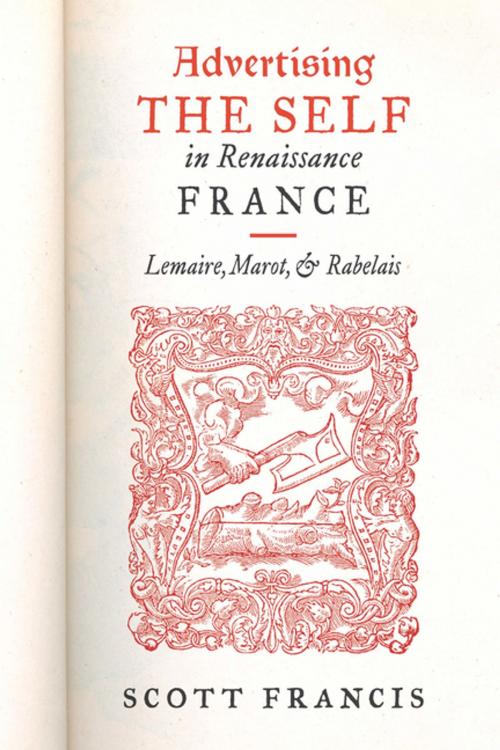Advertising the Self in Renaissance France
Lemaire, Marot, and Rabelais
Nonfiction, History, European General| Author: | Scott Francis | ISBN: | 9781644530085 |
| Publisher: | University of Delaware Press | Publication: | April 10, 2019 |
| Imprint: | University of Delaware Press | Language: | English |
| Author: | Scott Francis |
| ISBN: | 9781644530085 |
| Publisher: | University of Delaware Press |
| Publication: | April 10, 2019 |
| Imprint: | University of Delaware Press |
| Language: | English |
Advertising the Self in Renaissance France explores how authors and readers are represented in printed editions of three major literary figures: Jean Lemaire de Belges, Clément Marot, and François Rabelais. Print culture is marked by an anxiety of reception that became much more pronounced with increasingly anonymous and unpredictable readerships in the sixteenth century. To allay this anxiety, authors, as well as editors and printers, turned to self-fashioning in order to sell not only their books but also particular ways of reading. They advertised correct modes of reading as transformative experiences offered by selfless authors that would help the actual reader attain the image of the ideal reader held up by the text and paratext. Thus, authorial personae were constructed around the self-fashioning offered to readers, creating an interdependent relationship that anticipated modern advertising.
Distributed for the University of Delaware Press
Advertising the Self in Renaissance France explores how authors and readers are represented in printed editions of three major literary figures: Jean Lemaire de Belges, Clément Marot, and François Rabelais. Print culture is marked by an anxiety of reception that became much more pronounced with increasingly anonymous and unpredictable readerships in the sixteenth century. To allay this anxiety, authors, as well as editors and printers, turned to self-fashioning in order to sell not only their books but also particular ways of reading. They advertised correct modes of reading as transformative experiences offered by selfless authors that would help the actual reader attain the image of the ideal reader held up by the text and paratext. Thus, authorial personae were constructed around the self-fashioning offered to readers, creating an interdependent relationship that anticipated modern advertising.
Distributed for the University of Delaware Press















